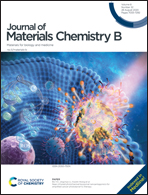Degraded Porphyra yezoensis polysaccharide protects HK-2 cells and reduces nano-COM crystal toxicity, adhesion and endocytosis
Abstract
We studied the protection of degraded Porphyra yezoensis polysaccharide (PYP) on human proximal tubular epithelial cells (HK-2) from cytotoxicity of nano-calcium oxalate monohydrate (COM) crystal, and the regulation of adhesion and endocytosis of the COM crystal. Four degraded fractions, namely, PYP1, PYP2, PYP3, and PYP4, were successfully obtained, with molecular weights (Mws) of 576.2, 49.5, 12.6, and 4.02 kDa, respectively. PYP protection reduced the crystal toxicity, prevented the destruction of cell morphology and cytoskeleton, inhibited the production of reactive oxygen species and the decline of lysosomal integrity, and reduced the expression of osteopontin and transmembrane protein (CD44). PYPi inhibited the adhesion and endocytosis of HK-2 cells by nano-COM. Endocytic COM crystals were accumulated in the lysosomes. With decreasing molecular weight, the ability of PYP to reduce cell damage and inhibit cell adhesion and endocytosis increased. PYP4, which has the smallest molecular weight, weaker intramolecular hydrogen bonds and more reducing groups, showed the best biological activity. PYPi can reduce the oxidative damage of the crystal to the cell, inhibit the adhesion and endocytosis of the crystal, and reduce the risk of kidney stone formation. Therefore, PYP, especially PYP4, has potential for use as a green drug to inhibit the formation and recurrence of calcium oxalate stones.



 Please wait while we load your content...
Please wait while we load your content...